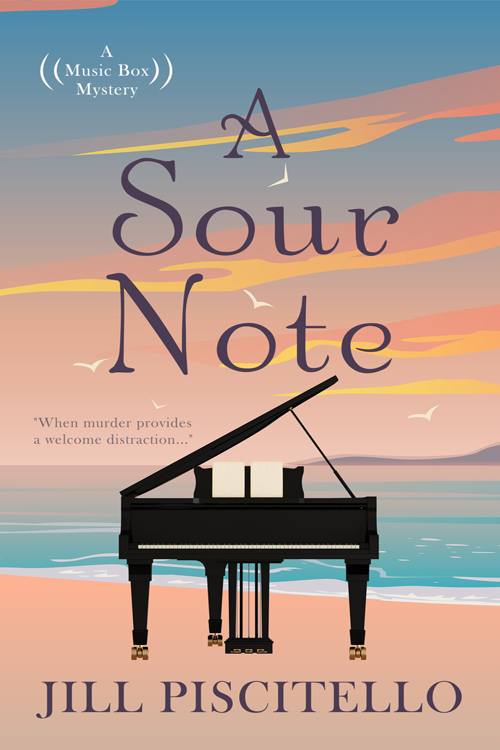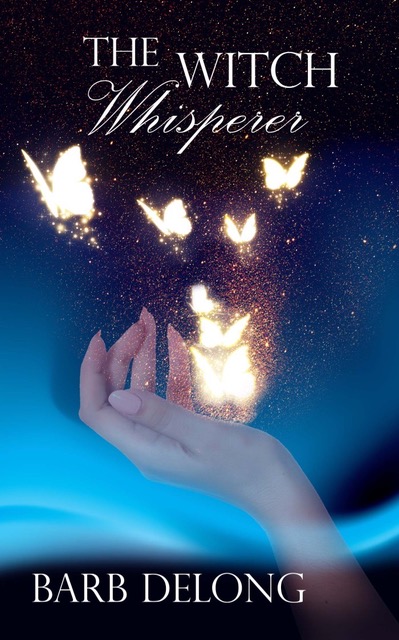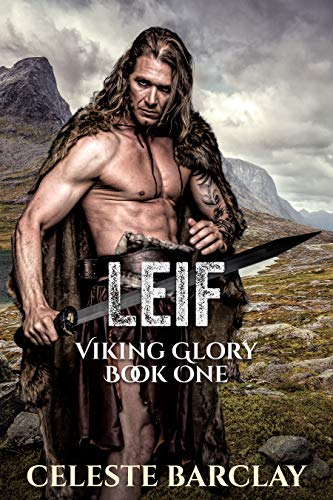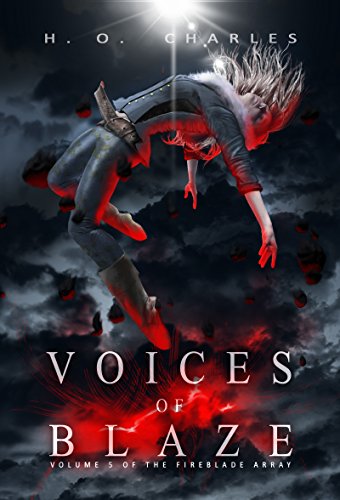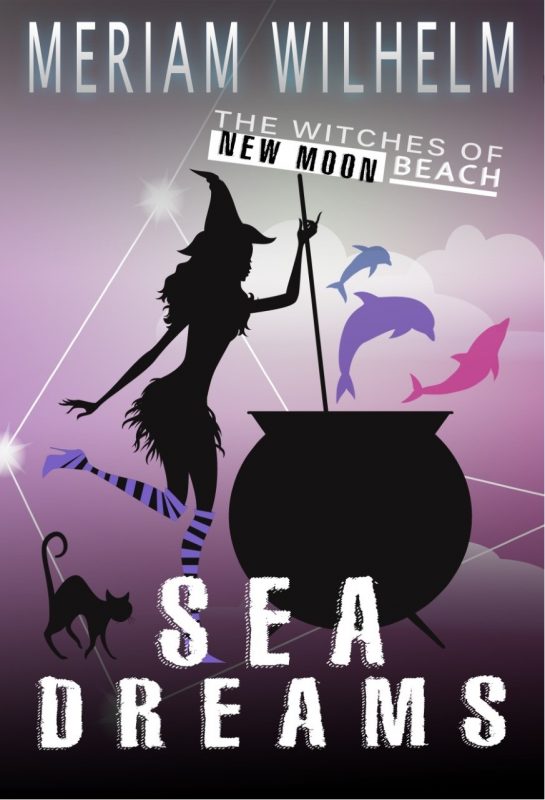Creating a Setting for Your Cozy Mystery by Carol L. Wright
June 13, 2019 by Bethlehem Writers Group in category From a Cabin in the Woods by Members of Bethlehem Writers Group tagged as BWG, Carol L Wright, cosy mysteries, cozy mysteries, Setting, writing

This month on From A Cabin in the Woods, we are featuring editor and author, Carol L. Wright.
Carol L. Wright escaped a career in law and academia for one in writing. She loves writing her Gracie McIntyre cozy mysteries where, unlike in life, justice always prevails. The first in the series, DEATH IN GLENVILLE FALLS, was a finalist for both the 2018 Killer Nashville Silver Falchion Award and the 2018 Next Generation Indie Book Award. She also writes short stories in many genres that have been published in a variety of literary journals and award-winning anthologies. She is married to her college sweetheart, and they live in the Lehigh Valley of Pennsylvania with their rescue dog and clowder of cats. Find out more on her website, and on Facebook at Carol L. Wright, Author.
Creating a Setting for Your Cozy Mystery
Carol L. Wright
 When we think about the setting for a cozy mystery, Murder She Wrote’s Cabot Cove or Agatha Christie’s St. Mary’s Mead often come to mind. Indeed, the term “cosy,” as the Brits spell it, was coined to describe Dame Agatha’s mysteries. Following these examples, most cozy writers choose a closed community as the backdrop for their murder. But, there is much more to a memorable setting for a cozy than being located in a small town.
When we think about the setting for a cozy mystery, Murder She Wrote’s Cabot Cove or Agatha Christie’s St. Mary’s Mead often come to mind. Indeed, the term “cosy,” as the Brits spell it, was coined to describe Dame Agatha’s mysteries. Following these examples, most cozy writers choose a closed community as the backdrop for their murder. But, there is much more to a memorable setting for a cozy than being located in a small town.
Once, only British settings were deemed appropriate for cozies. As recently as twenty years ago, some said cozies had to be set in England or in New England. But Jessica Fletcher travelled widely, and even Christie set some of her mysteries on an isolated Indian island (And Then There Were None) or at an exotic hotel (A Caribbean Mystery). Many readers, in fact, love to learn about new places while trying to solve a mystery—so long as those places aren’t too off-putting. Harsh settings are usually reserved for harder-edged fiction.
 With the idyllic small-town disappearing in the modern world, it’s not necessary to recreate a Cabot Cove. Since part of a cozy setting is the feeling of comfort and normalcy, you can set your mystery any place you wish, so long as you give your readers a feeling of familiarity. Anything from an ancient castle to a city neighborhood, a ski lodge to a desert island, a vacation resort to an Amish community will work just as well. Almost any place will do where people are thrown together and know (or get to know) each other.
With the idyllic small-town disappearing in the modern world, it’s not necessary to recreate a Cabot Cove. Since part of a cozy setting is the feeling of comfort and normalcy, you can set your mystery any place you wish, so long as you give your readers a feeling of familiarity. Anything from an ancient castle to a city neighborhood, a ski lodge to a desert island, a vacation resort to an Amish community will work just as well. Almost any place will do where people are thrown together and know (or get to know) each other.
Real or Fictional
But, should your setting be real or fictional? Both have their challenges.
 If you use a real place, you need to be familiar enough with it to be sure you don’t get it wrong. Residents of that place must be able to imagine your story on the familiar streets of their home. You can’t place an event at the intersection of 15th Avenue and 26th Street in Manhattan, for instance, since anyone familiar with New York would know that would put you somewhere in the Hudson River. Such errors take readers out of the story and cause them to question the rest of your “facts.” It might even cause them to give up on your book altogether or leave (yikes!) a bad review.
If you use a real place, you need to be familiar enough with it to be sure you don’t get it wrong. Residents of that place must be able to imagine your story on the familiar streets of their home. You can’t place an event at the intersection of 15th Avenue and 26th Street in Manhattan, for instance, since anyone familiar with New York would know that would put you somewhere in the Hudson River. Such errors take readers out of the story and cause them to question the rest of your “facts.” It might even cause them to give up on your book altogether or leave (yikes!) a bad review.
Besides accuracy, when using a real setting you need to beware of potential libel if you use real businesses or real people’s names—or even substitute fictional names but do not sufficiently conceal the real entity upon which it is based. You might think that a business owner would love to have the free publicity of being in your novel, but not all would—especially if they’re to be associated with a murder. If they believe your novel casts them in a false light, they can sue. Even if you won a lawsuit, it would cost you so much to defend it that you would regret using real names/businesses. If you must use real people or businesses, get a written release from them. For more on this, see: How to Use Real People in Your Writing.
The Details
The other option, of course, is to use a completely fictional setting. If you do, you will need to provide all the details of the terrain, climate, and culture of the place to allow your readers to become immersed in your fictional universe. Think about Carolyn Hart’s Broward’s Rock Island, SC, or my own Glenville Falls—a college town nestled in Western Massachusetts. While each is within a known region, the towns, their businesses, modes of transportation, and traditions are creations of the authors.
Even fictional settings can reference real places in a general way. In my Gracie McIntyre mysteries, I mention UMass-Amherst, Springfield, and Boston, MA, but the action of the story occurs in my fictional town of Glenville Falls. In Sherry Harris’s Sarah Winston Garage Sale Mysteries, that happen to be set in the area where I grew up, her town and the name of the nearby Air Force Base are fictional, but she mentions surrounding towns, roads, and landmarks. Reading them gives me a feeling of being back home. Done well, incorporating real places can help sales to the area’s current and former residents—especially if you do book signings there.

Back Ground Characters
Another part of the setting is your background characters. These are definitely NOT the folks who will drive your plot, kill your victim, or solve the crime. They’re the person who takes orders in the coffee shop, the mail carrier who delivers the threatening letter, or the security guard who lets people into the gated community. If the location of your story were a room, these characters would be the furniture.
As with any room, you want your furniture to add color, interest, and comfort to the setting. One character might have a colorful accent (pillow?) or mode of speech. Another could give the sleuth a place to rest and think a bit. Another could shed some light on the story. While these characters might serve a small role in the plot, they then go on about their fictional lives, unconcerned with what is happening in the rest of the novel. Still, they leave behind their imprint on your readers’ sense of place.
Once you have your setting—both the room and the furniture—you have the cozy world in which to spin your tale or your series. And, if, like me, you’re a “pantser”—one who writes by the seat of your pants rather than plotting everything out in advance—you might well be surprised to find that some of the lovely setting you’ve created ends up changing your story in ways you never anticipated.
What do you look for in a cozy setting? What are some of your favorite cozy settings?
Books by Carol L. Wright
4 0 Read more
Setting – Gemstones & Stories by Jenny Jensen
April 19, 2019 by Jenny Jensen in category On writing . . . by Jenny Jensen tagged as editing, Jenny Jensen, Setting, writing
A beloved aunt left me her jewelry not long ago. I don’t do a lot of bling so I carefully put most of it away. Except for the sapphire ring. I love that stone. The blue is so true, so deep you feel you could drown in it. It blazes with its own cool fire. Like a crow I covet it in secret. I love to look at it. Wearing the ring is out of the question—the setting looks as if it came from a box of Cracker Jacks. It is so lifeless it buries the stone in boredom. I don’t know where Aunt Bea got the jewel but given the racy facts of her life I bet it’s a helluva story.
Setting. It carries such an impact. Every writer learns early on that setting is a critical element of good writing. A badly defined setting diminishes a great story as much as that pot metal dulls my sapphire. I’m going to have it reset someday. First, I have to figure out what the perfect setting should be—Integral or Backdrop?
With an Integral setting the story’s environment affects the action and characters. The time and place influences every aspect of the story. A good setting conveys atmosphere and mood – Wuthering Heights could not have taken place anywhere else. I’m thinking my sapphire would be lonely in the Yorkshire moors.
An integral setting can convey so much more than a background for the action. The symbolism of your choice of setting can be powerful. To simply place the reader in an abandoned house is enough to know we’re not in the security and warmth of Grandma’s kitchen — we know it’s empty and holds none of the energy of life. The stage is set for all kinds of otherworldly possibilities from ghosts to demons to zombie politicians.
In all historical fiction an integral setting defines the characters. An aristocratic gentleman in Regency England is as defined by that period as is the beautiful housemaid working in his manner. The setting will mean something to each of these characters and therein lays the story. What does that setting mean to each character? Does each character change and view his or her setting differently? The tension and the action are defined by the period setting.
Fantasy and Sci-fi, any genre with world building, offers the possibility of a setting where the world not only affects the characters, it can interact with them. That’s when setting becomes a major character in itself. In addition to mood and atmosphere setting can be a good guy or a bad guy. World building offers the added component of changing the setting. Harry Potter opens in the ordinary world and moves to the incredible, interactive setting of Hogwarts.
All the rich possibilities of an integral setting would overwhelm my sapphire. Backdrop setting however, works for a story that could take place anywhere with no affect on the action or characters—The Emperor’s New Clothes or Winnie the Pooh or Waiting for Godot. All simple stories with a central message.
My sapphire is universally appealing. It is timeless. This sapphire is like a moral tale. It has a simple message: beauty. That makes a backdrop setting my best choice. I’m not looking for vague and general like many backdrop settings. I want it to be a clear, simple setting that anchors the message and then fades gracefully away to let the stone shine. I bet I can find at least 10 of those. Now if only I can get an appointment with VanCleef and Arpels…
4 0 Read more
Choosing the Right Setting.
May 20, 2015 by A Slice of Orange in category Guest Posts, Spotlight tagged as Against the Sky, Against the Tide, Against the Wild, Alaska, Kat Martin, Setting, writer's tips, writing(Or does it choose you?)
At the end of May, AGAINST THE TIDE, the twelfth novel in my AGAINST series is being released. This is the last of three books about the rugged Brodie brothers of Alaska.
Being plot-oriented, I usually work through a story in my head then figure out the best place for the story to take place. Sometimes, as happened with the Alaska Trilogy, AGAINST THE WILD, AGAINST THE SKY, and AGAINST THE TIDE, the setting was an essential part of the stories before they were even conceived.
The concept for the trilogy began with a month-long trip my husband and I took to Alaska–a place that has fascinated me since childhood. Even before we set out, I knew I wanted to write an Alaskan trilogy, but had no story concepts until we set out on the five thousand mile journey north.
It was my second long trip, both of which involved traveling cross-country, staying in a tiny pickup camper. Every day and night spent out in the open filled my head with story ideas. By the time we got home, I had rough outlines for three high-action romantic suspense novels about the rugged Brodie brothers, Dylan, Nick, and Rafe, and the women who loved them.
In AGAINST THE TIDE, Rafe Brodie is the owner of a charter boat fishing company in remote Valdez. Liv Chandler, the beautiful new owner of the Pelican Café, has fled to Valdez, fearing for her life. Liv can’t trust anyone, not even Rafe, the one man who makes her feel safe.
Rafe finds Olivia an intriguing mystery. He’s determined to uncover her secrets, but the woman has a past more dangerous than Rafe can guess. When murder strikes in the tiny town, he begins to believe something terrible is coming. And even in remote Valdez, Alaska, Rafe may not be able to protect the woman he loves.
Though I was comfortable writing Alaska from the months I spent up there and was familiar with the wildlife and mountainous terrain, since I live in Montana, the trip added vistas, sounds, smells, and ideas for some of the interesting characters who appear in the novels.
Setting is always important to a story, in some books more than in others. To help me with the different locales, I use Google Maps extensively. They have street maps, street cameras, satellite views, terrain maps, and still photos, all of which help me see what an area looks like. What an amazing writers’ tool!
Going to the location, of course, is the best way to chose a setting. There are places I couldn’t write about without having been there. Alaska was one of them.
Driving all the way from Montana through Canada, over the Top of the World road, we took a side trip to Valdez. It was raining there, but the scenery was still spectacular. Valdez is the shipping terminal for the great Alaska pipeline, which gave me the plot line for AGAINST THE TIDE.
I try to choose locals that are fun for readers, enhance the suspense, and give insight into the characters.
I hope you enjoy my Alaskan he-man, Rafe Brodie, along with the mysterious Olivia Chandler in AGAINST THE TIDE.
Till then, very best wishes and happy reading, Kat
New York Times bestselling author Kat Martin is a graduate of the University of California at Santa Barbara where she majored in Anthropology and also studied History. She is married to L.J. Martin, author of western, non-fiction, and suspense novels.
Kat has written more than sixty-five novels. Sixteen million copies of her books are in print and she has been published in twenty foreign countries, including Japan, France, Germany, Argentina, Greece, China, Russia, and Spain.
Born in Bakersfield, California, Kat currently resides in Missoula, Montana, on a small ranch in the beautiful Sapphire mountains.
Her last eleven books have hit the prestigious New York Times bestseller list. Both AGAINST THE WILD and AGAINST THE SKY, her latest release, took top ten spots. AGAINST THE TIDE the 3rd book in the Brodies of Alaska series will hit shelves in a couple weeks!
Affiliate Links
A Slice of Orange is an affiliate with some of the booksellers listed on this website, including Barnes & Nobel, Books A Million, iBooks, Kobo, and Smashwords. This means A Slice of Orange may earn a small advertising fee from sales made through the links used on this website. There are reminders of these affiliate links on the pages for individual books.
Search A Slice of Orange
Find a Column
Archives
Featured Books
LEIF Viking Glory Book One
Fate brought them together. Free will binds them.
More info →VOICES OF BLAZE
The Voices of Blaze speak their words of advice, but will they bring help or harm?
More info →SEA DREAMS
Can help from a lavender-eyed sea witch, a few enchanted cupcakes and a touch of New Moon magic really rescue a once famous now washed up artist from himself?
More info →Newsletter
Contributing Authors
Search A Slice of Orange
Find a Column
Archives
Authors in the Bookstore
- A. E. Decker
- A. J. Scudiere
- A.J. Sidransky
- Abby Collette
- Alanna Lucus
- Albert Marrin
- Alice Duncan
- Alina K. Field
- Alison Green Myers
- Andi Lawrencovna
- Andrew C Raiford
- Angela Pryce
- Aviva Vaughn
- Barbara Ankrum
- Bethlehem Writers Group, LLC
- Carol L. Wright
- Celeste Barclay
- Christina Alexandra
- Christopher D. Ochs
- Claire Davon
- Claire Naden
- Courtnee Turner Hoyle
- Courtney Annicchiarico
- D. Lieber
- Daniel V. Meier Jr.
- Debra Dixon
- Debra H. Goldstein
- Debra Holland
- Dee Ann Palmer
- Denise M. Colby
- Diane Benefiel
- Diane Sismour
- Dianna Sinovic
- DT Krippene
- E.B. Dawson
- Emilie Dallaire
- Emily Brightwell
- Emily PW Murphy
- Fae Rowen
- Faith L. Justice
- Frances Amati
- Geralyn Corcillo
- Glynnis Campbell
- Greg Jolley
- H. O. Charles
- Jaclyn Roché
- Jacqueline Diamond
- Janet Lynn and Will Zeilinger
- Jaya Mehta
- Jeff Baird
- Jenna Barwin
- Jenne Kern
- Jennifer D. Bokal
- Jennifer Lyon
- Jerome W. McFadden
- Jill Piscitello
- Jina Bacarr
- Jo A. Hiestand
- Jodi Bogert
- Jolina Petersheim
- Jonathan Maberry
- Joy Allyson
- Judy Duarte
- Justin Murphy
- Justine Davis
- Kat Martin
- Kidd Wadsworth
- Kitty Bucholtz
- Kristy Tate
- Larry Deibert
- Larry Hamilton
- Laura Drake
- Laurie Stevens
- Leslie Knowles
- Li-Ying Lundquist
- Linda Carroll-Bradd
- Linda Lappin
- Linda McLaughlin
- Linda O. Johnston
- Lisa Preston
- Lolo Paige
- Loran Holt
- Lynette M. Burrows
- Lyssa Kay Adams
- Madeline Ash
- Margarita Engle
- Marguerite Quantaine
- Marianne H. Donley
- Mary Castillo
- Maureen Klovers
- Megan Haskell
- Melanie Waterbury
- Melisa Rivero
- Melissa Chambers
- Melodie Winawer
- Meriam Wilhelm
- Mikel J. Wilson
- Mindy Neff
- Monica McCabe
- Nancy Brashear
- Neetu Malik
- Nikki Prince
- Once Upon Anthologies
- Paula Gail Benson
- Penny Reid
- Peter Barbour
- Priscilla Oliveras
- R. H. Kohno
- Rachel Hailey
- Ralph Hieb
- Ramcy Diek
- Ransom Stephens
- Rebecca Forster
- Renae Wrich
- Roxy Matthews
- Ryder Hunte Clancy
- Sally Paradysz
- Sheila Colón-Bagley
- Simone de Muñoz
- Sophie Barnes
- Susan Kaye Quinn
- Susan Lynn Meyer
- Susan Squires
- T. D. Fox
- Tara C. Allred
- Tara Lain
- Tari Lynn Jewett
- Terri Osburn
- Tracy Reed
- Vera Jane Cook
- Vicki Crum
- Writing Something Romantic
Affiliate Links
A Slice of Orange is an affiliate with some of the booksellers listed on this website, including Barnes & Nobel, Books A Million, iBooks, Kobo, and Smashwords. This means A Slice of Orange may earn a small advertising fee from sales made through the links used on this website. There are reminders of these affiliate links on the pages for individual books.





























